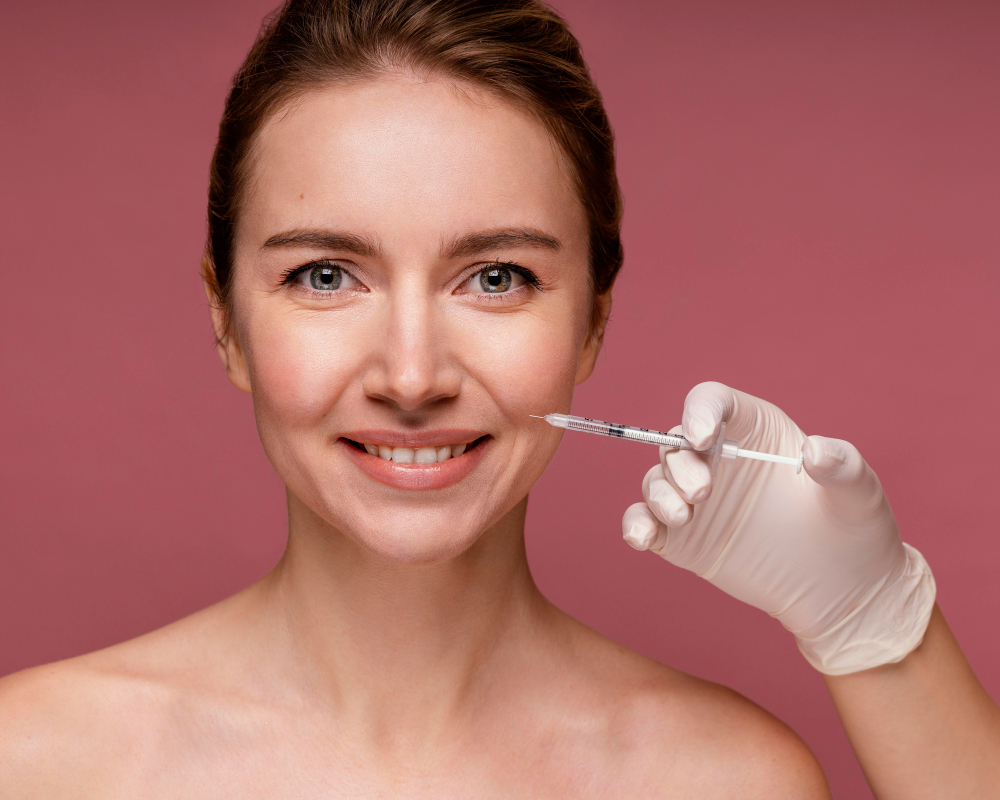
This toxin temporarily blocks nerve signals, helping muscles relax and reducing wrinkles. It is commonly used to treat fine lines and wrinkles in the facial area. Botox is a minimally invasive method that provides quick and effective results.
Botox is not only used for cosmetic purposes but also for treating various medical conditions. It is an effective method for treating migraines, excessive sweating, muscle spasms, and certain neurological disorders. As it does not require surgical intervention, the recovery time is short, allowing patients to quickly return to their daily activities.
Who Can Get Botox?
Botox is typically chosen by adults who wish to reduce wrinkles and fine lines. This treatment is suitable for individuals over the age of 18 with good general health. It is especially effective in areas such as forehead lines, crow’s feet, and vertical lines between the eyebrows. Those considering Botox for cosmetic purposes should have realistic expectations and be aware of the procedure’s limitations.
However, Botox is not recommended in some cases. Pregnant or breastfeeding women, individuals with neurological disorders, and those allergic to botulinum toxin should avoid Botox. Additionally, individuals with active skin infections or those who have undergone botulinum toxin treatment in the past six months should consult a specialist before getting Botox.
Areas Where Botox Is Effective
Botox is especially effective in treating wrinkles and fine lines in the facial area. Dynamic wrinkles, such as forehead lines, frown lines (glabellar lines), and crow’s feet around the eyes, can be successfully treated with Botox. By temporarily stopping muscle movements in these areas, Botox helps the skin appear smoother and younger.
Botox can also be used in various non-facial areas. It is applied to treat excessive sweating (hyperhidrosis) in areas such as the underarms, palms, and soles. In migraine treatment, Botox injections into specific muscle groups can reduce the frequency and severity of headaches. Muscle spasms and certain neurological disorders are other conditions that can be treated with Botox.
Differences Between Botox and Fillers
While both Botox and filler treatments are used to treat wrinkles and fine lines, they differ in their mechanisms and applications. Botox works by temporarily blocking nerve signals to stop muscle movements, thereby reducing dynamic wrinkles. It is commonly used for treating upper facial wrinkles such as forehead lines, crow’s feet, and frown lines.
Filler treatments, on the other hand, involve injecting substances like hyaluronic acid into the skin. Fillers address volume loss and reduce static wrinkles by filling in the spaces under the skin. This application is especially effective in areas with volume loss, such as the cheeks, lips, and nasolabial folds. While fillers add volume and youthfulness to the skin, Botox limits muscle movement to treat dynamic wrinkles.
How Is Botox Administered?
The Botox procedure is generally quick and involves minimal discomfort. First, the treatment area is cleaned, and a local anesthetic cream may be applied if necessary. Then, using a fine needle, botulinum toxin is injected into the targeted muscle groups. The procedure typically takes 10-15 minutes, and patients can usually return to their normal activities immediately afterward.
Following Botox injections, mild redness, swelling, or bruising may occur at the treatment site, but these symptoms usually resolve within a few days. The full effects of Botox appear 3-7 days after the procedure, and the results typically last for 3-6 months. Regular Botox treatments help maintain the effects, keeping the facial expression youthful and relaxed. For more information on Botox prices and details, contact EMPCLINICS.
FAQs
How long does the first Botox treatment last?
The effects of Botox typically last for 3-6 months. After this period, muscle activity returns, and wrinkles may reappear. Regular treatments can help maintain the results for longer periods.
Do wrinkles worsen after Botox wears off?
No, wrinkles do not worsen after Botox wears off. However, the wrinkles will gradually return to their original appearance if the Botox is not maintained.
Can Botox be administered during pregnancy?
Botox is generally not recommended during pregnancy and breastfeeding. If you are pregnant or planning to become pregnant, consult your doctor before starting treatment.

